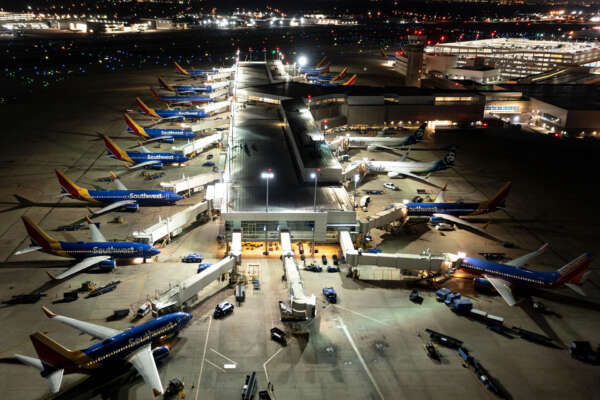Addressing operational wildfire-fighting challenges through airport design
In-the-field, on-the-ground experience is key
In 2024, wildfires raged across the Texas Panhandle, incinerating over one million acres, causing billions of dollars in damage to farms and ranches, and killing at least two people and untold livestock.
During that time, we were wrapping up the design of a unique project that would help combat future catastrophes just like this. Garver partnered with the City of Abilene and the State of Texas to design an air tanker base to enhance Texas A&M Forest Service’s fire-fighting capabilities — one that allows for four simultaneous fire-retardant loading pits for large air tankers (LATs) and accommodates very large air tanker (VLAT) operations.
Given the increase in the frequency and severity of wildfires in recent years, including those in the Panhandle and in California in 2025, the facility is a timely and essential addition to Texas’ firefighting infrastructure. When complete, it will triple the capacity of the Forest Service to battle wildfires in the state and provide the first permanent air tanker base in Texas. The state currently has several temporary bases, including one in Abilene, which have to rely on temporary trailers during fire season.
With its central location, ample airspace, accessibility, and proximity to grasslands, prairies, and forests vulnerable to wildfire, Abilene is an ideal site for the facility.
The project, which recently broke ground and is scheduled to be completed in a year, is a pretty typical apron project with one big exception — its primary purpose is to serve as a homebase for fighting wildfires. This presents specific operational challenges, which we met by collaborating closely with the Texas A&M Forest Service and the US Forest Service.
Learning from crews on the front lines
A layout that looks good on paper may not work well in practice. We got to witness this firsthand during both the Panhandle and California fires, invaluable experiences that informed our design.
From watching the Abilene airport’s operations, we learned what worked well, what didn’t, and what made it easier from a maintenance standpoint. We tailored the design for the fire-retardant operations, crew and rest protocols, and fueling procedures based on their needs.
Aviation Project Engineer Alex Jessop, PE, and I also had the opportunity to travel to San Bernardino, California, to meet with CAL FIRE and the US Forest Service to see their extensive operations during the recent wildfires there. We got to observe how they function and gained an understanding of their staging and environmental containment efforts. We interviewed them about what they liked and disliked and reviewed drawings of their facility — a process that helped ensure we didn’t replicate the same problems in our design of the Abilene base.
The importance of these experiences can’t be overstated. You can review drawings every day, but to deliver a successful design, you need that on-the-ground perspective. Being in California and Abilene during the fires gave us a better grasp of how crews maintain the system, contain spills, manage operations, and position aircraft. For example, in a typical apron layout we try to fit as many aircraft as we safely can, but firefighting aircraft are a different beast and require different infrastructure to support them — whether that be water service or power requirements. These planes are big and include models like the MD-87, C-130, and the DC-10.
We also faced the design challenges that arise when you have to pave a large grass field. When it rained, water wouldn’t soak into the soil but hit the pavement, creating potential erosion issues downstream. To address this, we needed a detention pond capable of containing not only the stormwater runoff, but also any spills, such as fire retardant. Underground containment tanks save space but are difficult to clean so, based on recommendations from maintenance crews, we opted for an evaporation pond (EVAP) that contains retardant spills and allows for easier cleanup in the pond basin.
We also worked with other specialists to properly size tank structures, fire retardant pumping, utility connections, and FAA cable relocations, and enlisted our environmental team to investigate the environmental effects should that fire retardant become exposed.
Last fall, I attended an Abilene City Council meeting that brought home the significance of this project. Community members, county judges, commissioners, and state emergency representatives alike spoke passionately about its necessity and their hope that it would save property and lives when wildfires, inevitably, strike again.









Share this article